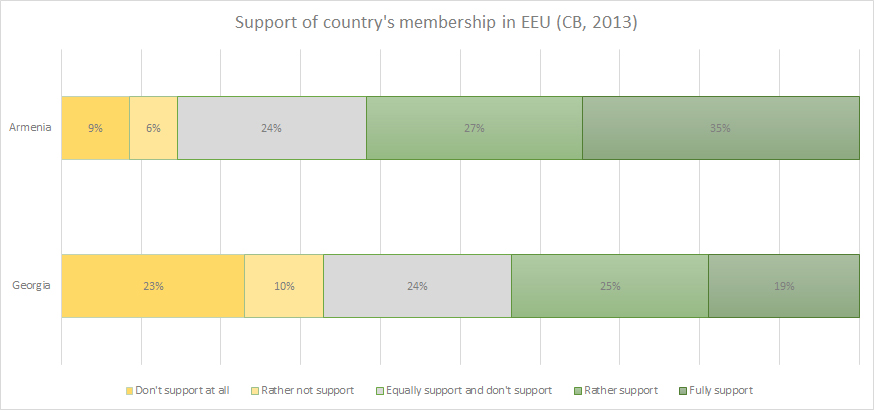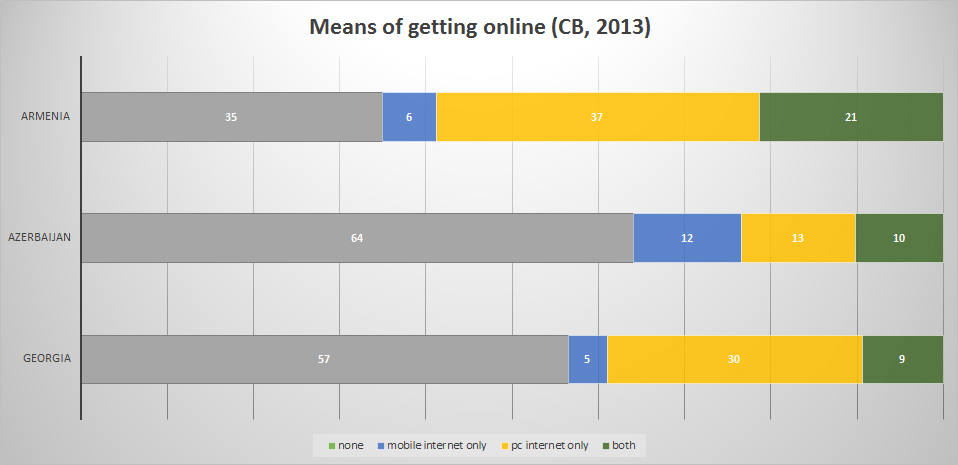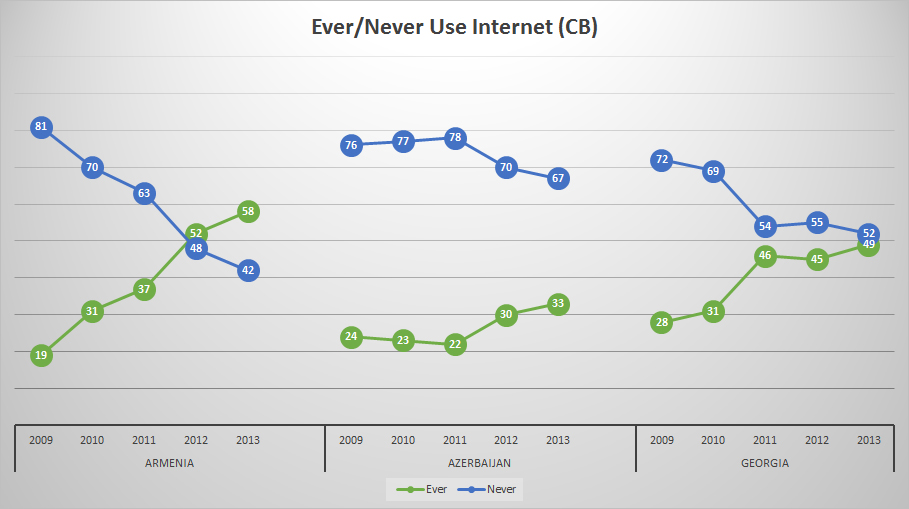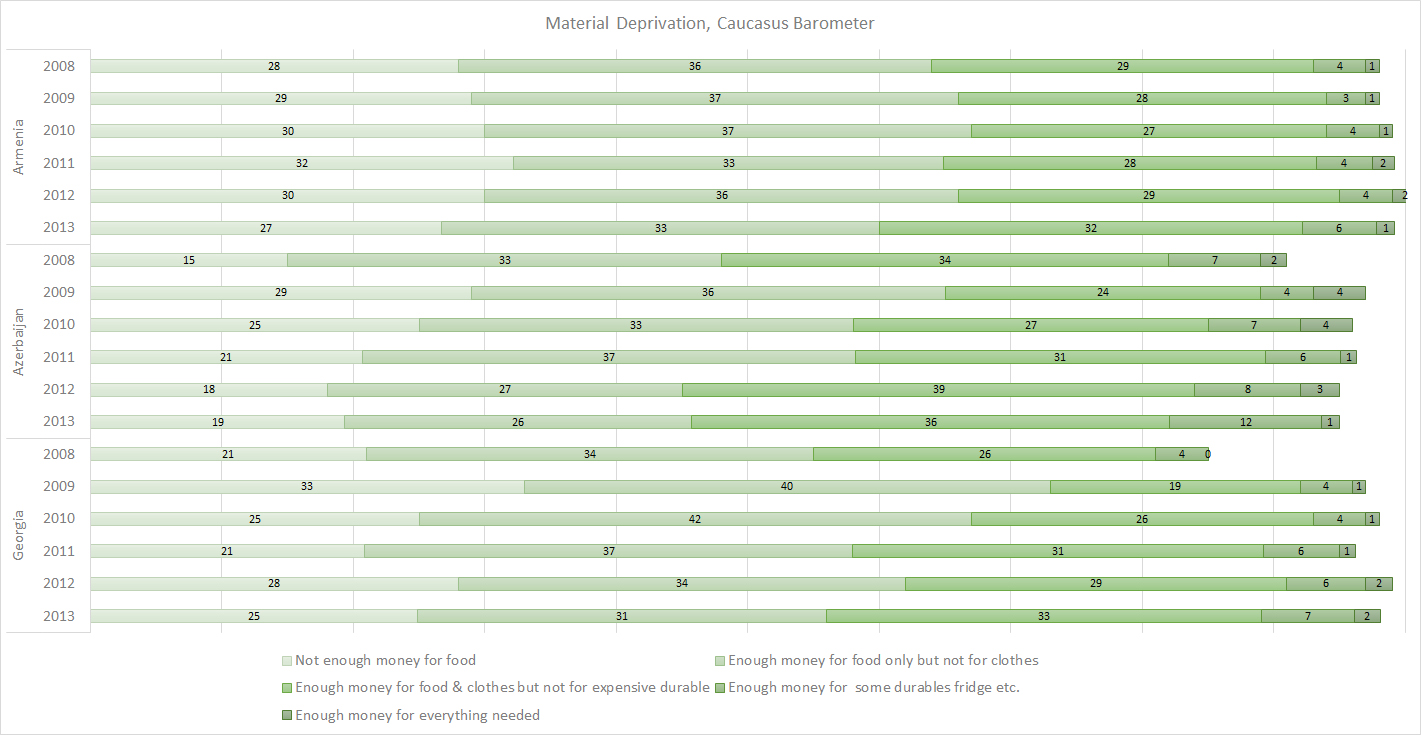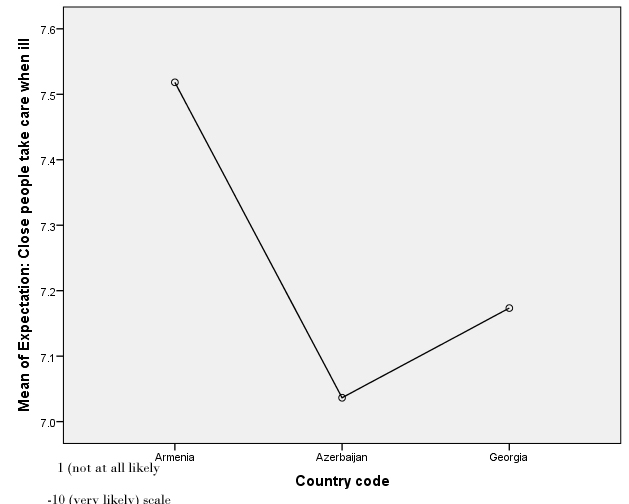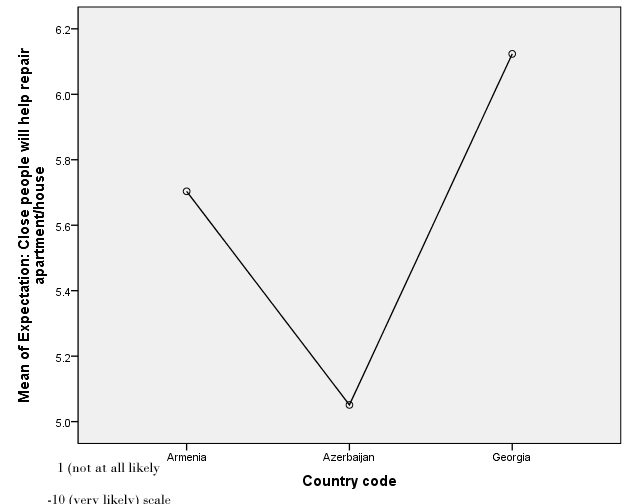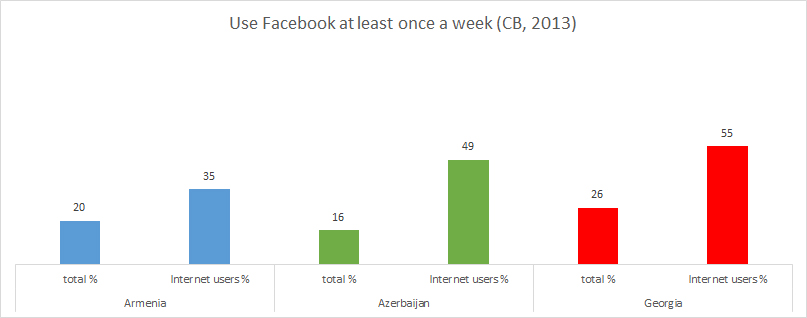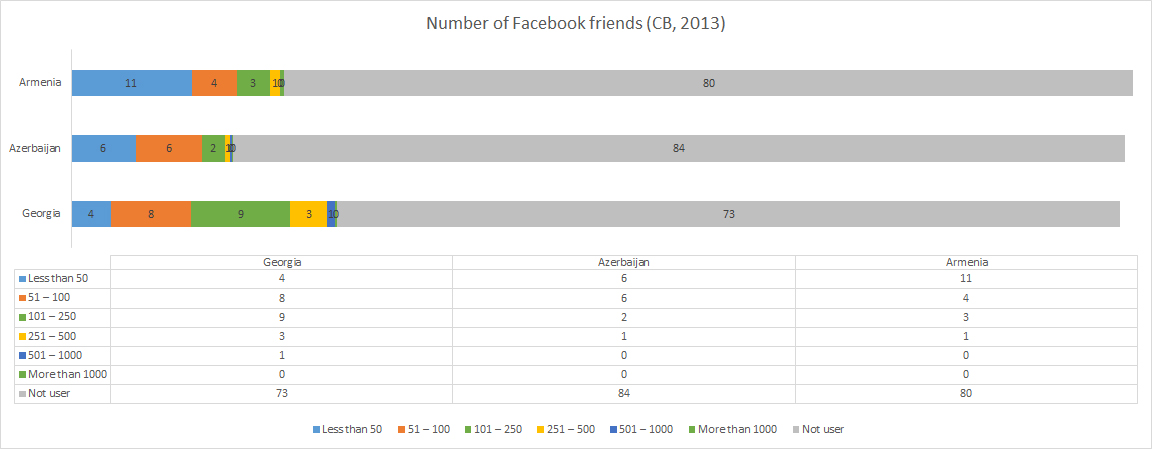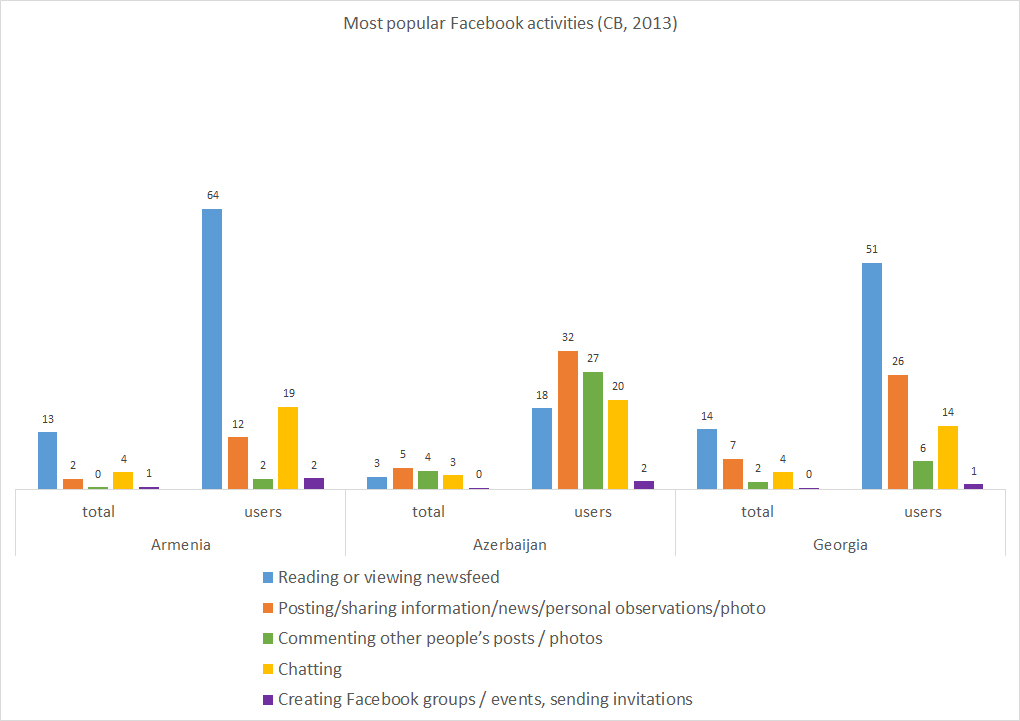This is an update to this post from January and this post from March and this post from September.
It is hard to know how many people in a country are using Facebook, but through Facebook’s Ad selling program, you can get some rounded information. The numbers they give are not exact, so these percentages displayed below are not accurate for the true number of users. THESE RESULTS MAY NOT ADD UP TO REASONABLE 100%S. I calculated everything from the actual population. So when it says 36% of Georgian women are X, I calculated from the population data from the World Bank. This isn’t SOLID information, but it does come FROM Facebook, so it is a little bit better than SocialBakers.
This is what it looks like to find out this information:

So, Armenia has 2,974,184 people, Azerbaijan 9,590,159 people, and Georgia 4,555,911 people total according to the World Bank and after I subtracted those age 0-14 (World Bank’s category, not mine) the populations are Armenia: 2,460,436; Azerbaijan: 7,419,487; Georgia: 3,855,233.
Facebook Ads says that this many people in each of those countries is a potential viewer of their ads (thus a Facebook user): Armenia: 580,000 (in January) 620,000 (in March) 680,000 (in September) 740,000 (in January 2015) ; Azerbaijan: 1,320,000 (in January) 1,380,000 (in March) 1,460,000 (in September) 1,460,000 (in January 2015); Georgia: 1,220,000 (in January) 1,280,000 (in March) 1,380,000 (in September) 1,500,000 (in January 2015).
Thus, here are the percentages of the age 14+ populations of each country who are on Facebook:
 (January)
(January)
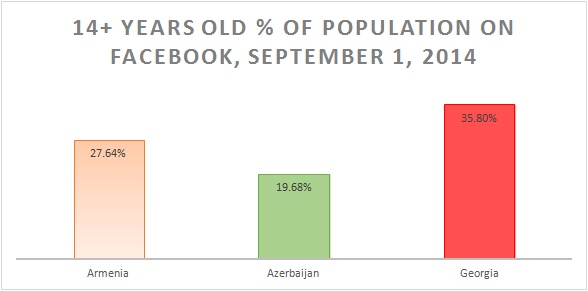
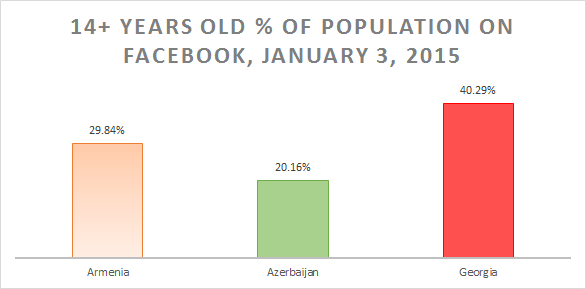
Armenia: 30%
Azerbaijan: 20%
Georgia: 40%
So that is interesting, but let us look at gender differences (I took the direct gender population data from the age distribution tables – this is not 50/50, but more accurate).
And let’s look at this over a year.
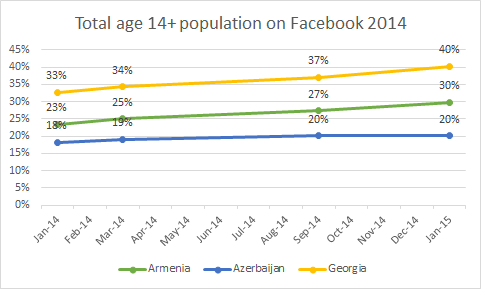
Lots of growth in Armenia and Georgia and some in Azerbaijan.
 (January)
(January)
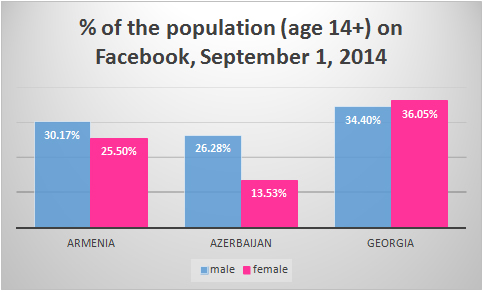
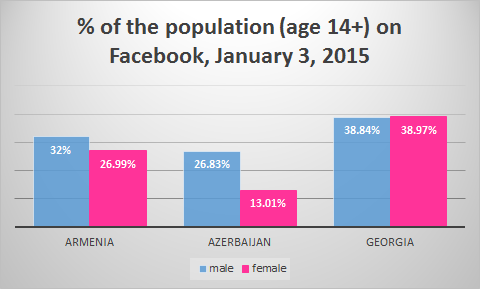
Armenians and Georgians are evenly distributed gender-wise on Facebook. And Azerbaijanis, well, this gender difference is shown in a lot of other research.
 (January)
(January)
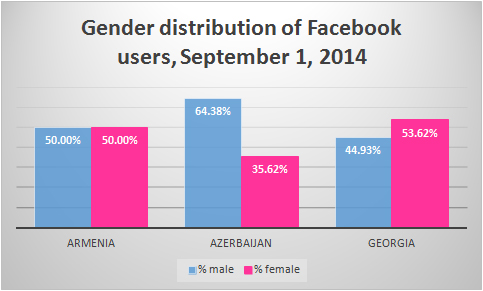

In terms of the balance of users, Armenians are fairly even, Georgians have a bit more women and you can see that about 2/3rds of Azerbaijanis on Facebook are men. Although this may seem shocking, this is much better than it has been in previous years.
 (January) EDIT: THIS SHOULD BE 15-24 YEAR OLDS!
(January) EDIT: THIS SHOULD BE 15-24 YEAR OLDS!

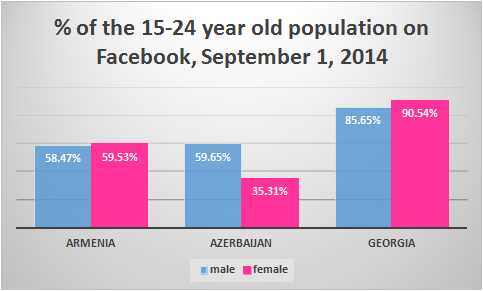
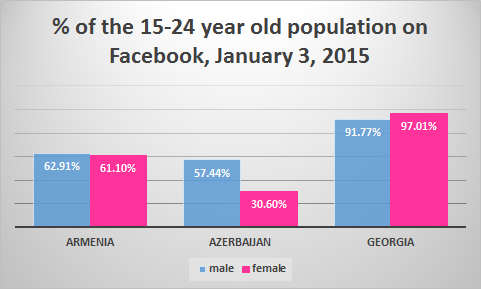
Wow Georgia! Most Georgian young adults are on Facebook, no doubt about that. About 60% of Armenian young adults and for Azerbaijan 60% of male young adults and a little less than a third of female young adults.
For comparison, here’s Caucasus Barometer derived information from 2012 and 2013.
I added a new measurement this quarter – looking at language use. I assume that Facebook is deriving this information from the language that a user chooses as their main Facebook language – not what they’re typing in. Although, I’m not sure about this. Facebook gathers a lot of data about its users and it could autodetect the language that the person uses. Also, I have no idea if these contain multiple languages. There could easily be users that use two languages equally. And also certainly this doesn’t detect transliterated languages.
But, not all language choices are available in the Facebook ad system. I’m sure lots of people use Armenian, Azerbaijani, and Georgian for their Facebook platform.

This makes sense to me, but what’s going on in Georgia? I assume that this empty space is Georgian.
I wish that I knew more about how they calculate this, but it is interesting nonetheless.



 (January)
(January)


















